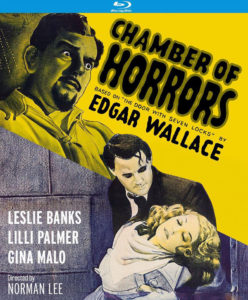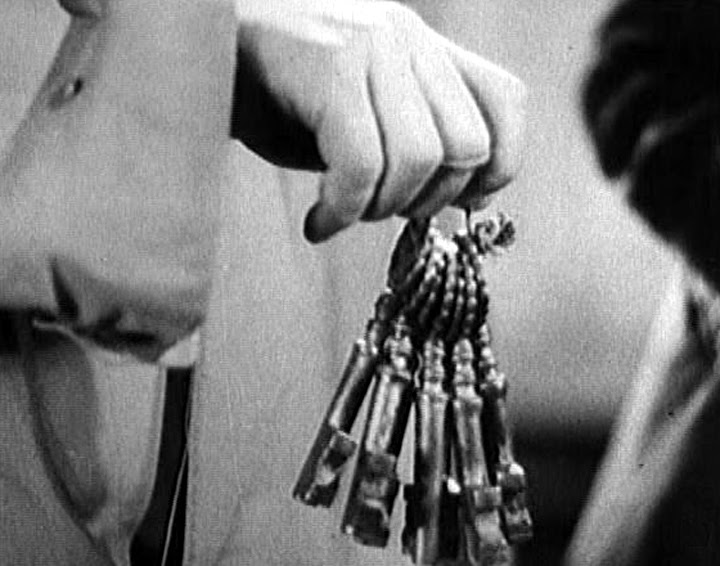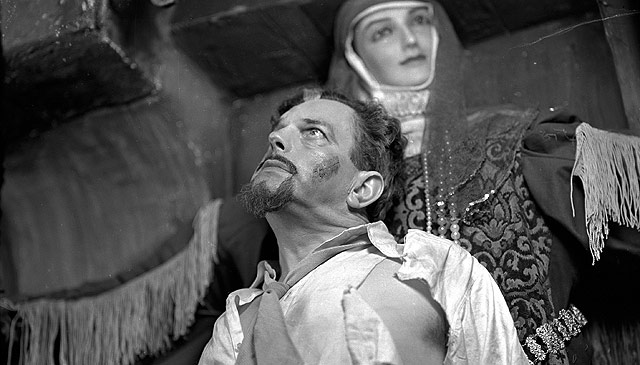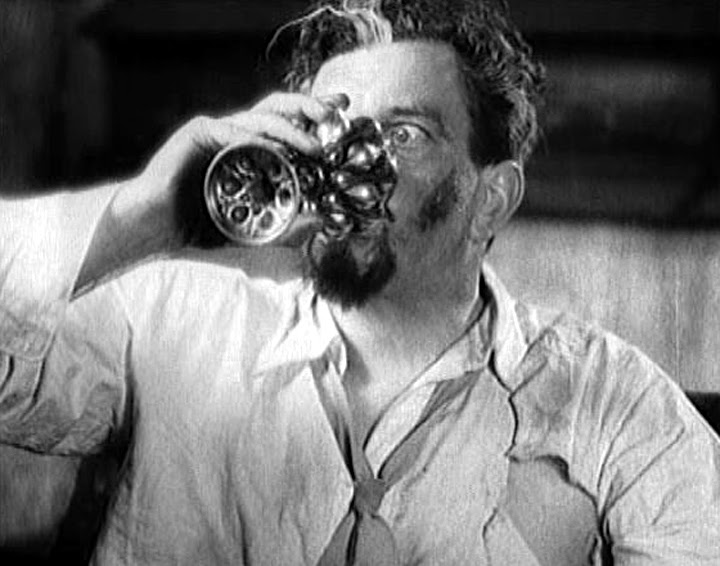Kino Lorber Unlocks Door To Hidden Terror!
DIRECTED BY NORMAN LEE/1940
STREET DATE: MARCH 21, 2017/KINO LORBER
One of the great services performed to the viewing public, and to mankind in general, was when the gubernatorial mad scientist laboratory Gizmonic Institute shot a pair of low-level tech grunts into space, first “Joel” and later “Mike”, and forced them to watch about 1000 years’ worth of bad movies. Accompanied only by their robot companions, the sardonic “Tom Servo” and the sarcastic “Crow”, Joel and Mike staved off ever-encroaching insanity with what the grand experiment soon discovered to be the most sophisticated and quality-redeeming tool available to the human psyche: irony. From The Crawling Eye (1958) through Manos: The Hands of Fate (1966) to Danger: Diabolik (1968), the best defense against glaring plot inconsistencies, character cliché, and general slapdashery, it was found, was whistling-in-the-dark wisecracks in the company of beleaguered-but-sympathetic viewing companions.
Failing that, as is usually the case with this solitary viewer, one at least has recourse to the solace of counter-narrative: in other words, the art of watching the movie “within” the movie and unlocking its “hidden” story.
 Originally titled The Door With Seven Locks, and based on a thriller by Edgar Wallace, this “old dark house” mystery – complete with rodent-creeping crypts, secret-locked doors, and eyehole-peeping portraits – received a boost when Hollywood’s low-rent “poverty row” studio Monogram Pictures picked up the American distribution rights and retitled the British-produced melodrama as Chamber of Horrors. Offering the ritual pleasures of the genre, and little else, Horrors/Seven Locks might have proved a tepid hypothetical episode aboard the Satellite of Love, not bad enough for ironic appreciation but boring enough to test one’s viewing patience (even at 79 minutes), were it not for a rip-roaring performance from top-billed Leslie Banks.
Originally titled The Door With Seven Locks, and based on a thriller by Edgar Wallace, this “old dark house” mystery – complete with rodent-creeping crypts, secret-locked doors, and eyehole-peeping portraits – received a boost when Hollywood’s low-rent “poverty row” studio Monogram Pictures picked up the American distribution rights and retitled the British-produced melodrama as Chamber of Horrors. Offering the ritual pleasures of the genre, and little else, Horrors/Seven Locks might have proved a tepid hypothetical episode aboard the Satellite of Love, not bad enough for ironic appreciation but boring enough to test one’s viewing patience (even at 79 minutes), were it not for a rip-roaring performance from top-billed Leslie Banks.
Virtually repeating his role as Count Zaroff from 1932’s The Most Dangerous Game, the vaguely foreign accent and disconcertingly pointy beard is transplanted in toto from an exiled Russian aristocrat making killing sport of people shipwrecked on a remote South Seas island to an ambitious Spanish doctor heading a somewhat creepy criminal conspiracy to disinherit a pretty ingenue (Lilli Palmer) from her family’s drafty estate.

If that sounds like diminishing story returns — and it is — the trappings of the shadowy investigation, low comedy relief, and obligatory romance at least allow Banks’ Dr. Manetta, apparently a direct descendant of the Grand Inquisitor of the Spanish Inquisition, the opportunity to gleefully lead the principals through an elaborate torture chamber, and viewers familiar with movies like The Mystery of the Wax Museum (1933), The Black Cat (’34), and the famous Trophy Room from The Most Dangerous Game itself know that the “guided tour” is always a highlight (CoH’s mannequin-like Iron Maiden a highlight of the highlight) in these Grand Guignol narratives.
Basically, it’s nice that characters played by scenery-chewing actors like Boris Karloff, Lionel Atwill, and here a snorting, eye-rolling, drollery-retorting Leslie Banks, have a hobby, and one feels a certain kinship with their unhealthy yet enthsiastic obsessions even as one acquires yet another black-and-white vision of terror for one’s home video collection.

Anyway, that’s where this one is going: on a shelf with a growing row of black-spined, white-titled movie miscellany Kino Lorber has been kind enough to unleash on an unsuspecting world. And while this quite undistinguished entry has absolutely no need of a Blu-ray presentation, much less an audio commentary from film historian David Del Valle and filmmaker Kenneth J. Hall (which, while not particularly informative, may at least give viewers a few further titles to hunt down for their collection; possible reference to The Most Dangerous Game, again, only partially intended), it’s ultimately a good thing that someone, somewhere will find cult appreciation in the indifferent genre efforts of yesteryear.
Lacking robot companions, appreciable wit, or the imagination to plumb the story’s dark depths further, I’ll sign off on Chamber of Horrors by hoping its viewers have some or all of these tools at their disposal: they’re going to need them.

The images used in the review are present only as a reference to the film and are not meant to reflect the actual image quality of the Blu-ray.

